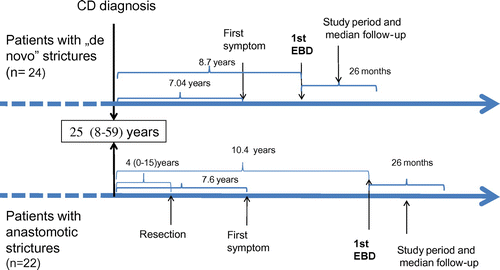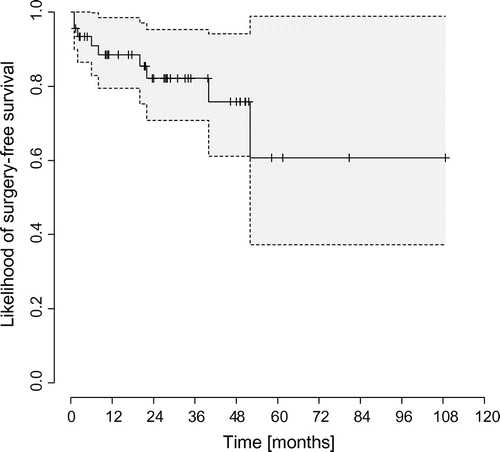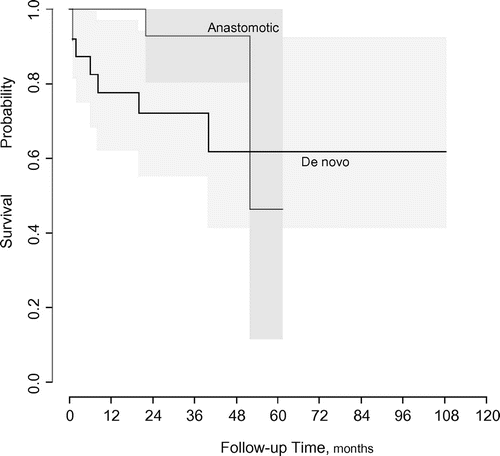Figures & data
Table 1. Clinical data of enrolled patients
Figure 1. Patients and strictures characteristics.
Notes: The mean time between the diagnosis and the development of strictures with symptoms was 7.04 and 7.6 years in de novo and anastomotic strictures, respectively. The elapsed time between the diagnosis and the first balloon dilatation was 8.7 and 10.4 years, respectively. The mean time between diagnosis and colon resection was 4 years in patients with anastomotic strictures. The mean time between bowel resection and the first EBD was 6.83 years in patients with anastomotic strictures.

Figure 2. Likelihood of surgery free survival among our patients.
Notes: Overall, 9 out of 46 dilated subjects underwent surgery during the follow-up period. The mean surgery free survival time was 78 months (95% CI: 59–98 months). The Kaplan–Meier curve shows that at month 12 approximately 90% of patients, at month 24 approximately 80% of patients was surgery free; however after 50 months the surgery free rate was 60.7%.

Figure 3. Likelihood of surgery free survival among patients with de novo and anastomotic strictures.
Notes: Less patients needed surgery in the anastomotic group. The Kaplan-Meier curve shows that at month 12 approximately 80% of patients with de novo and 100% of patients with anastomotic strictures was surgery free.

Figure 4. Overall efficacy of EBD: 73.9% of patients showed technical success at the first EBD and 47.8% of patients showed that endoscopic balloon dilatation is effective over a long-term period i.e. at the end of the median 26 (range, 1–109) months follow-up period.
Note: Nevertheless, at the end of follow-up period the surgery free rate was 60.7%.

